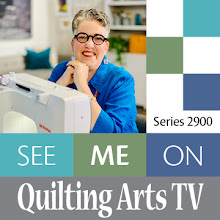 |
| “Bonnie & Clyde” by Susan Brubaker Knapp (2012) |
But the background was a bit dull, with a few distracting elements. Alex said she thought that one of her quilts would make a better background, and I agreed. This is her quilt, Chopsticks:
I started by painting in the black:
And then the eyes and some of the rusty brown, and the pink noses:
Then the tan:
And then the background, Alex’s quilt. Here is the piece with the painting finished, before thread sketching. It is a bit light compared to the photo of the cats; I knew I had to leave it this way, since the thread would add a lot of texture and color:
Here are some detail shots of the thread sketched and quilted finished piece. Some of these photos were taken under different light sources, which is why some look cool and some warm.
I hope he likes it. I managed to get it to Alex by Christmas Eve, but just barely!
Here are questions to commonly asked questions about my wholecloth painted pieces:
What fabric do you use? Either Pimatex PFD (prepared for dyeing) by Robert Kaufman, or Dyer’s Muslin (MDYE) by P&B Fabrics.
How do you transfer the design? I start by tracing the main lines in the image from an 8x10" photo on tracing paper. I enlarge this traced drawing to the size I want in PhotoShop, import it into InDesign, then print it out in tiles on my computer and tape them together to get a full-sized pattern. (You can also take your traced drawing to an office supply place and have them blow it up.) I position this under the fabric and start painting. I can see the lines through the fabric, so they provide rough guidelines for me.
What paints do you use? I like PROChemical & Dye’s ProFab Transparent Paint. If you are interested in trying them out, you could start with this set. I will be offering kits of these paints on my website starting next year.
What brushes do you use? I use brushes with very stiff, short bristles by Lowe-Cornell. I will also be offering these brushes on my website starting next year.
What thread do you use? For thread sketching, I always use Aurifil Cotton Mako 50 weight, which is a very fine cotton thread with a lot of sheen. I also used the 50 weight to quilt this piece; sometimes I use 40 weight or heavier.
Can you teach this to my quilting group? Yes! I have several wholecloth painting and thread sketching classes. You can read more about them here. I am booked up for 2013, and starting to book 2014 and 2015.































































